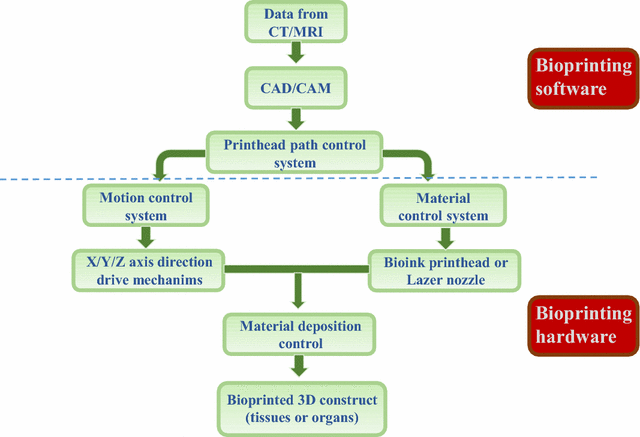Recent advances in bioprinting techniques: approaches, applications and future prospects
- PMID: 27645770
- PMCID: PMC5028995
- DOI: 10.1186/s12967-016-1028-0
Recent advances in bioprinting techniques: approaches, applications and future prospects
Abstract
Bioprinting technology shows potential in tissue engineering for the fabrication of scaffolds, cells, tissues and organs reproducibly and with high accuracy. Bioprinting technologies are mainly divided into three categories, inkjet-based bioprinting, pressure-assisted bioprinting and laser-assisted bioprinting, based on their underlying printing principles. These various printing technologies have their advantages and limitations. Bioprinting utilizes biomaterials, cells or cell factors as a "bioink" to fabricate prospective tissue structures. Biomaterial parameters such as biocompatibility, cell viability and the cellular microenvironment strongly influence the printed product. Various printing technologies have been investigated, and great progress has been made in printing various types of tissue, including vasculature, heart, bone, cartilage, skin and liver. This review introduces basic principles and key aspects of some frequently used printing technologies. We focus on recent advances in three-dimensional printing applications, current challenges and future directions.
Keywords: 3D bioprinting; Artificial organs; Tissue engineering.
Figures



References
Publication types
MeSH terms
Substances
LinkOut - more resources
Full Text Sources
Other Literature Sources

